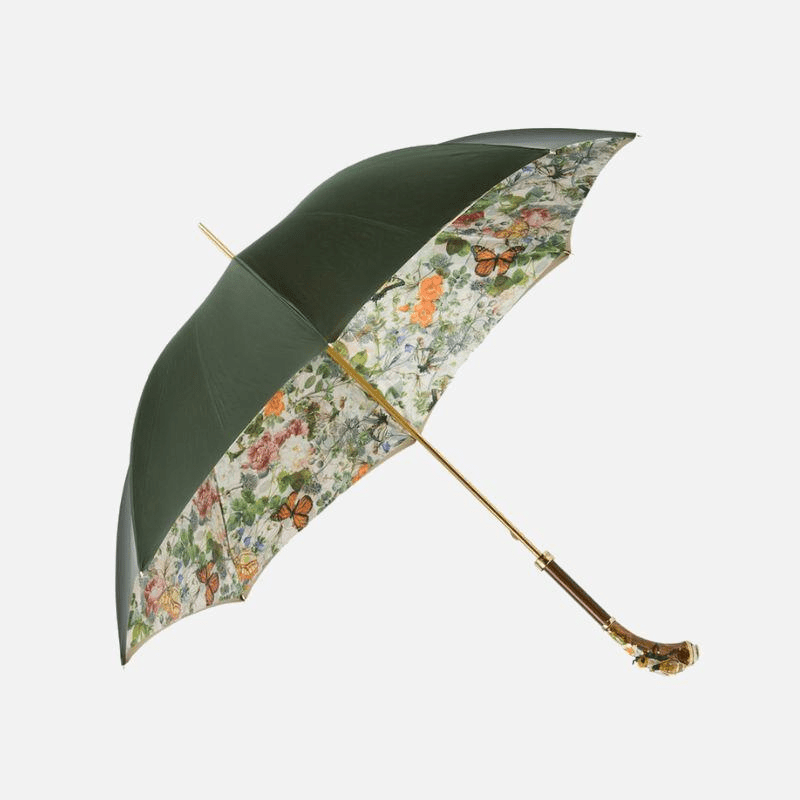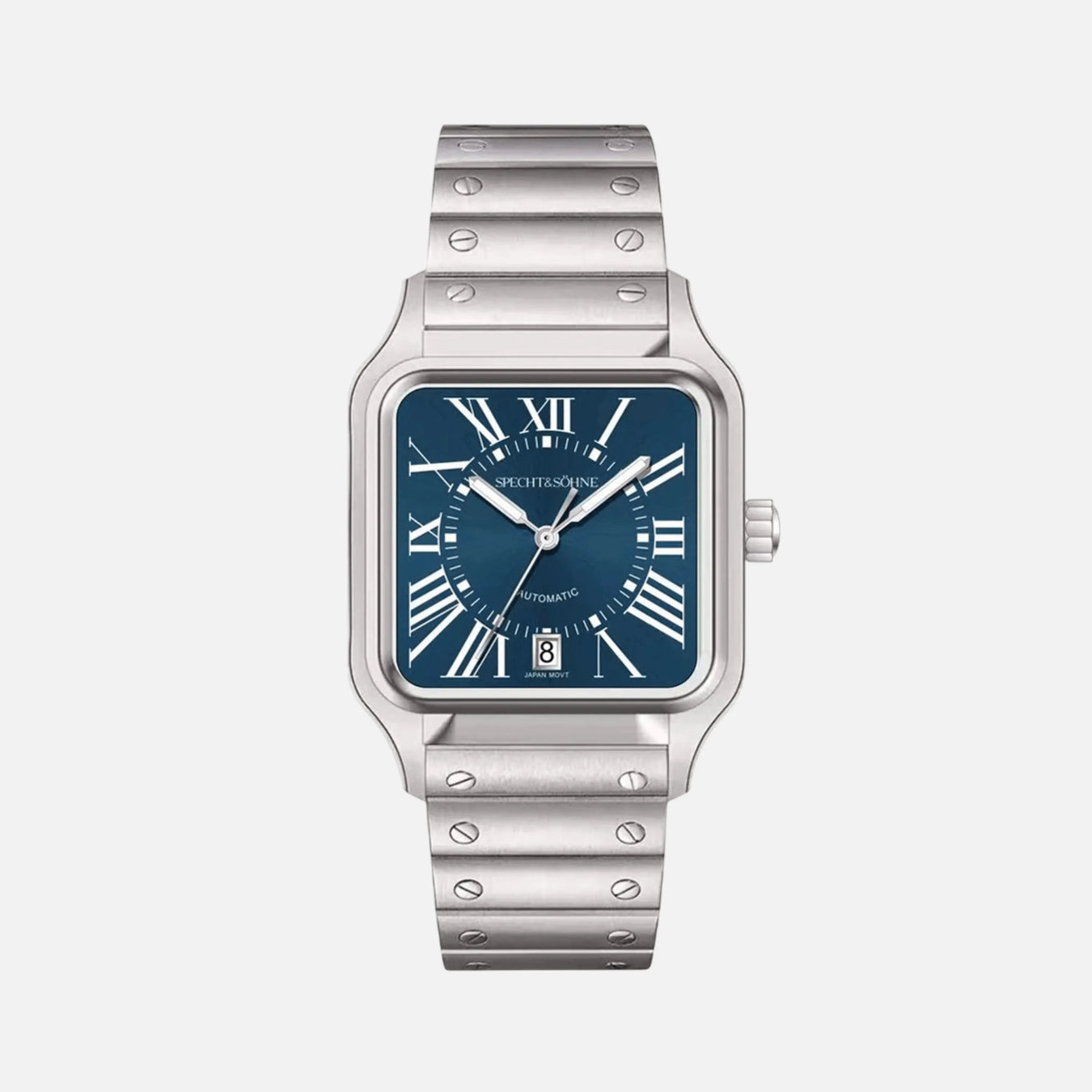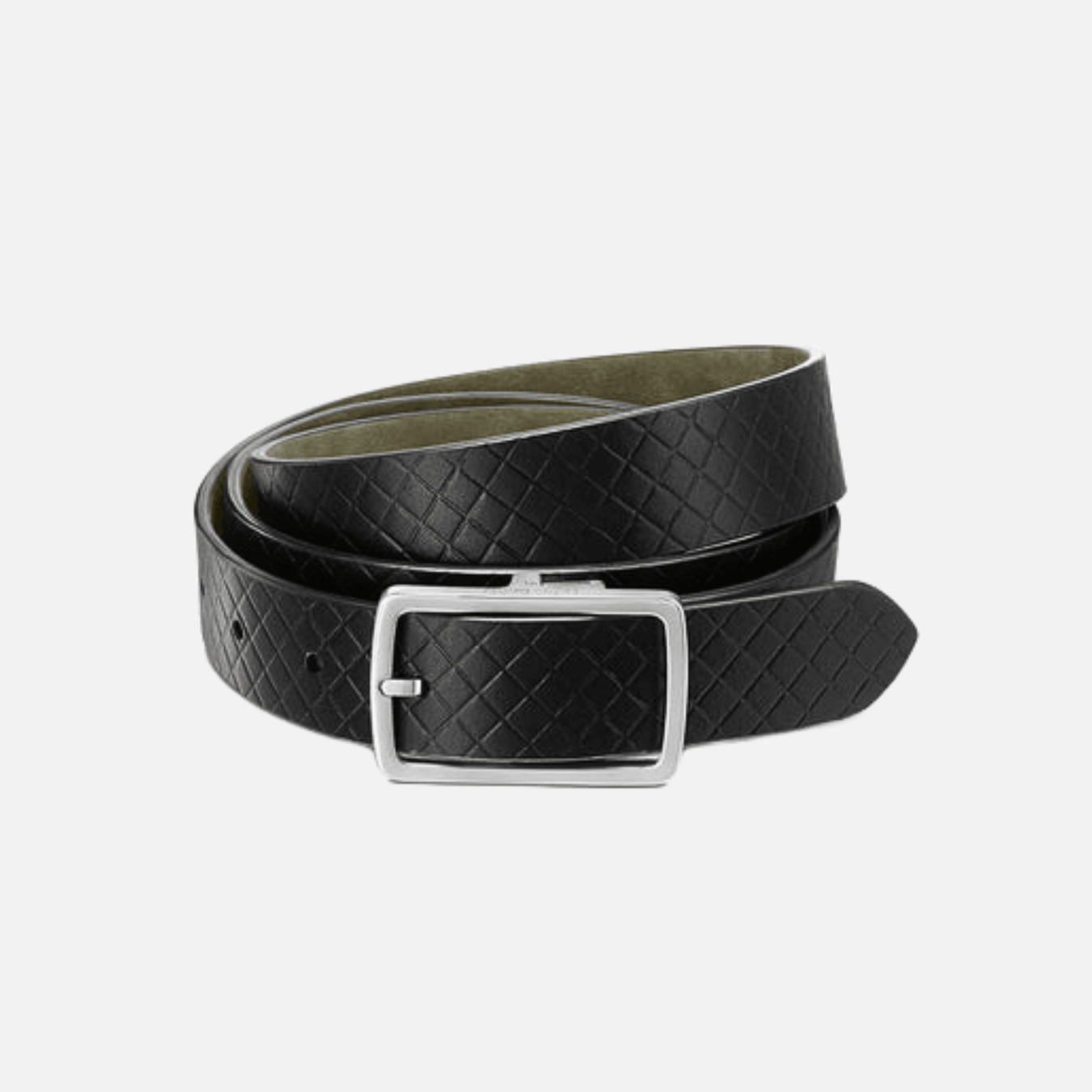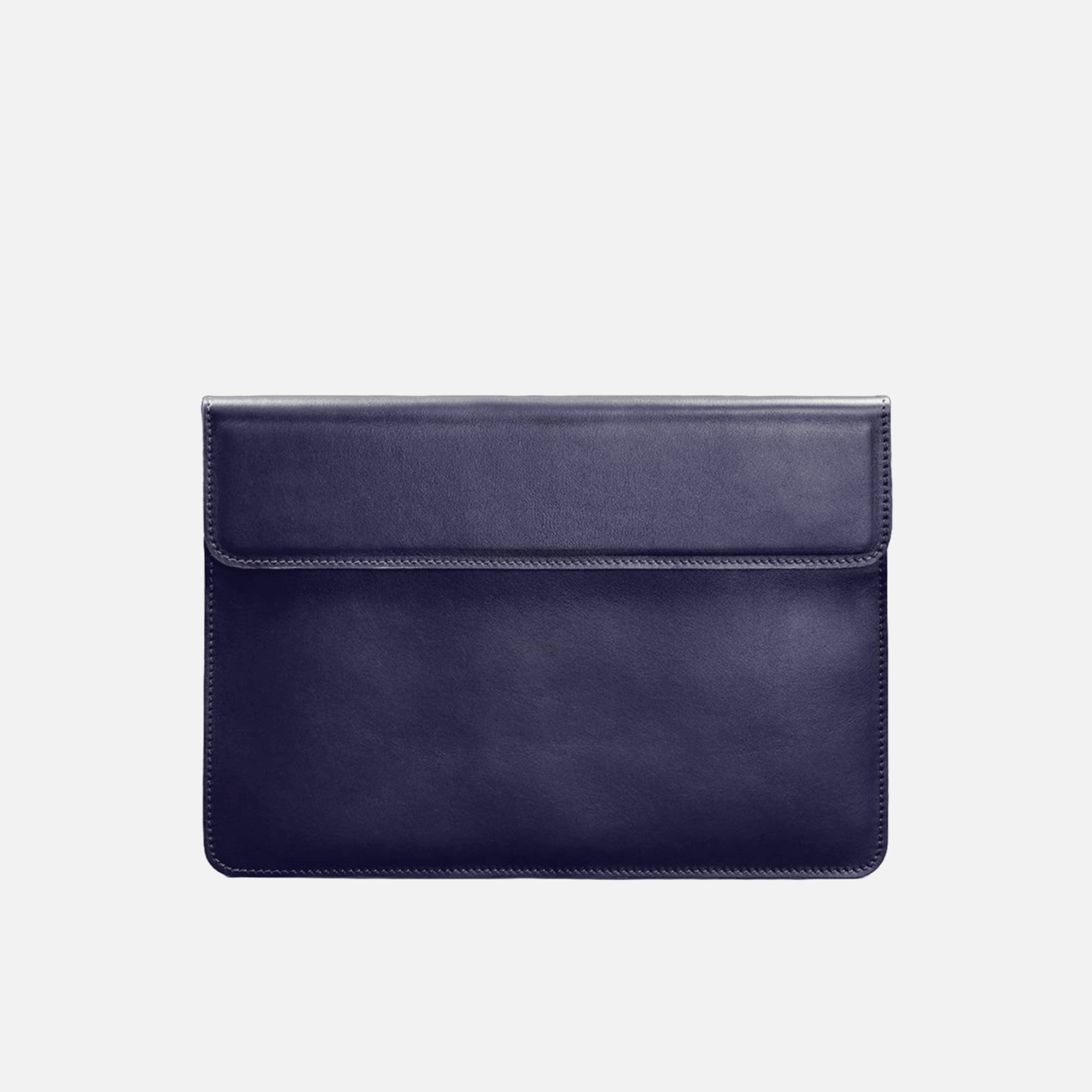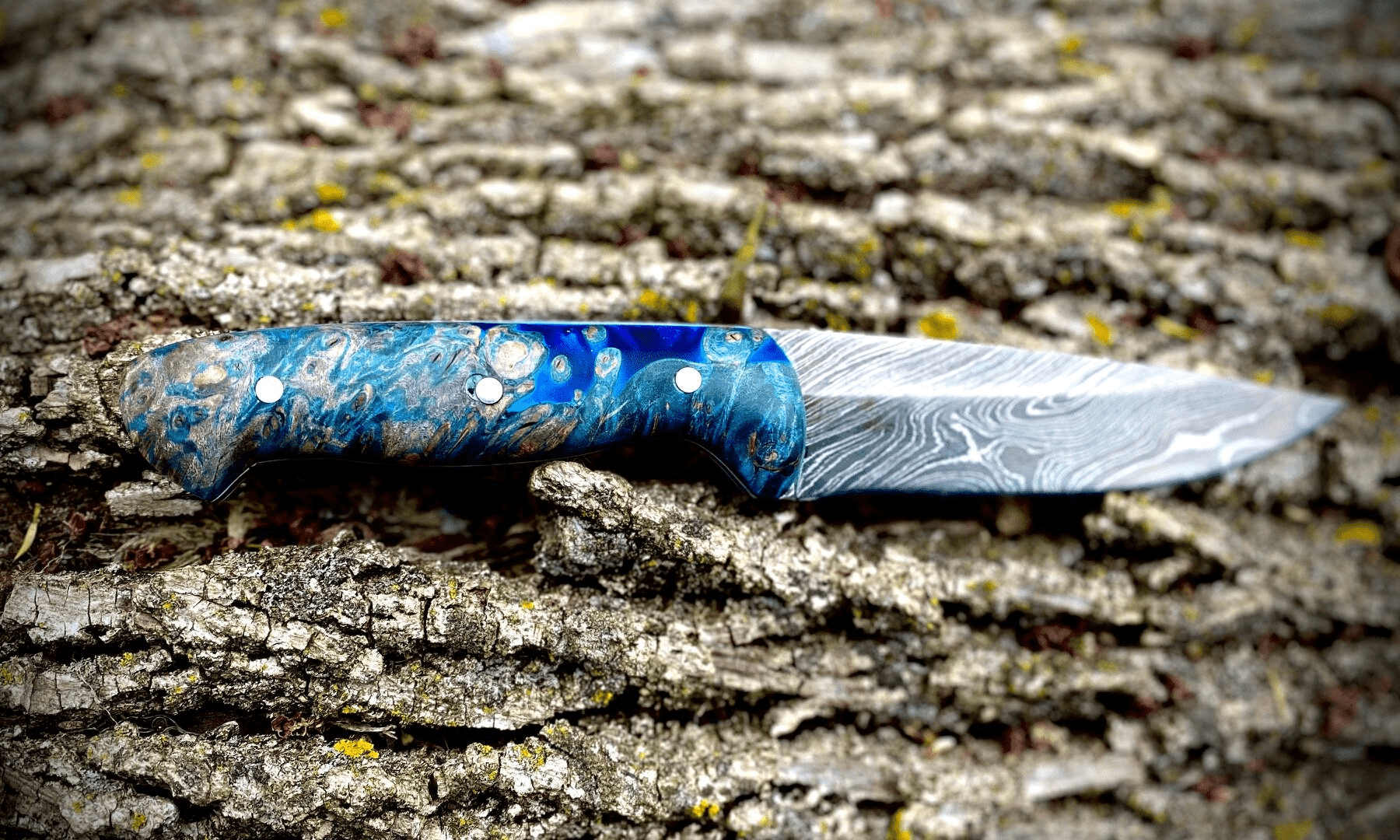
The Craftsmanship Behind Exotic Wood and Epoxy Resin Knives
Introduction to Exotic Wood and Epoxy Resin Knives
Craftsmanship has always taken a front seat when it comes to creating objects that are not just utilitarian but also aesthetically appealing. In the realm of handmade knives, a niche interest has blossomed into a world of expressive and functional art that marries the natural beauty of exotic wood with the versatility of epoxy resin. These knives are not typical cutlery; they are a testament to the bespoke movement where every piece tells its own story, passionately made to order reflecting the essence of its creator.
Epoxy resin, a synthetic polymer known for its durable finish and adhesive properties, has revolutionized knife making by offering a palette for color and encapsulated objects, allowing artisans to create handles that range from ethereally translucent to vibrantly patterned. Exotic wood, on the other hand, brings a touch of nature’s own artwork to the table, with its intricate grain patterns, unique hue shifts, and warmth to the touch.
The epitome of this craftsmanship is found not only in the product but in the ‘about us’ journey of the artisans themselves—often showcased through behind the scenes crafting—revealing luxury umbrellas of patience, precision, and artistic flair with artisanal techniques. Each knife handle, akin to an abstract painted dachshund statue, is not merely a handle but a canvas where art intersects function.
The process of making these one-of-a-kind knives involves a keen understanding of materials, a steady hand, and an eye for design, striving to ensure that each creation is as unique as it is sharp. For connoisseurs and chefs alike, these exotic wood and epoxy resin knives are more than tools; they are a form of self-expression, imbued with the stories of their makers and the forests and laboratories from which they originated.
The Allure of Exotic Wood in Knife Making
The craft of knife making is an art that amalgamates both functionality and beauty. Among the materials cherished for their aesthetic and practical qualities, exotic wood emerges as a distinguished favorite. The allure of such wood lies not merely in its visual appeal but also in its storied history and the unique characteristics it brings to each handmade knife.
In the world of exotic woods, richness in color, intricate patterns, and a natural luster set these materials apart. Woods like Cocobolo, Ebony, Bocote, and Zebrawood each tell a tale of their origin – from the rainforests of Central America to the plains of Africa. These woods infuse each knife with a sense of place and tradition, offering a narrative that speaks to the connoisseur’s desire for a piece that stretches beyond the mundane.
The texture and grain of exotic woods are especially prized in knife making. Each slice of wood is a fingerprint, imbued with a pattern that is exclusively its own, ensuring that every made-to-order knife is a distinct piece of functional art. This uniqueness attracts collectors and style aficionados alike, who appreciate the one-of-a-kind nature of their accouterments.
Another aspect feeding the allure of exotic woods in crafting knives is durability. Hardwoods commonly used in high-end knife making are resistant to moisture and wear, translating to longevity and improved performance – a key consideration for those invested in quality over the commonplace.
Behind the scenes, artisans exercise meticulous techniques to shape, sand, and finish the wood, revealing its hidden beauty. The result is a marriage of raw natural charm and refined craftsmanship, creating not just a tool, but an heirloom-worthy object of desire, reflecting the pinnacle of luxury and craftsmanship akin to that found in the crafting of luxury umbrellas or an abstract painted dachshund statue.
Exotic wood handles on knives are more than mere functional components; they are a statement of elegance, an emblem of the owner’s taste, and a testament to the artisan’s skill.
Epoxy Resin: Durable Beauty Meets Functionality
Epoxy resin, a compound formed from the polymerization of epoxides, is prized for its exceptional durability and aesthetic versatility, making it an indispensable material in the creation of luxury handmade items, including exotic wood and epoxy resin knives. It serves as a bonding agent and a decorative medium, offering a glossy finish that enhances the natural grain of wood while providing a robust, everlasting sheen.
Blending the strength of industrial-grade adhesives with the clarity of pristine glass, epoxy resin cements its role as a top-tier material in artisanal craftsmanship. The process begins with the careful mixing of resin and hardener, transforming liquid components into a solid form that exhibits remarkable resistance to heat, chemicals, and physical impact.
The adaptability of epoxy resin allows craftsmen to infuse a range of colors, encapsulate objects, or create mesmerizing patterns akin to those seen in abstract art. When integrated with exotic woods in knife making, it not only fortifies the handle but also introduces unique, personalized aesthetics—not unlike an abstract painted dachshund statue, capturing the essence of both art and function.
Behind the scenes, artisans use epoxy resin to realize their envisioned designs, painstakingly pouring and molding it to perfection. This made-to-order approach yields a product that is both practical and visually striking. The following points underscore its benefits:
- Enhanced Durability: Epoxy resin creates a resistant barrier, prolonging the life of knife handles.
- Aesthetic Flexibility: Its clear nature allows for an endless spectrum of color and design possibilities.
- Protection: It safeguards the wood from water damage and daily wear, critical for tools that undergo frequent handling.
- Customization: Every piece can be tailored, ensuring a one-of-a-kind creation for discerning collectors.
By combining beauty and functionality, epoxy resin elevates these handmade knives from mere cutting instruments to pieces of art, embodying the essence of durability and exquisite elegance that lasts a lifetime.
The Art of Selecting and Combining Materials
The creation of exotic wood and epoxy resin knives is not just an act of function but a celebration of aesthetics within the craftsmanship domain. The artisans dedicated to fashioning these luxury items pay meticulous attention to the provenance and quality of materials they choose, thereby ensuring each handmade piece is distinct and reflects a synergy of durability and beauty.
In the selection process, craftsmen carefully consider the type of wood, looking for pieces that not only provide the necessary sturdiness but also feature unique grain patterns and colors. The wood’s natural beauty is often accentuated by the translucent or dyed epoxy resin that is artfully combined to fill in gaps or fuse with the wood, creating intricate designs akin to abstract painted canvases or as unique as an abstract painted dachshund statue.
The resin’s role extends beyond mere aesthetics; it serves as a robust binder, melding with the wood to enhance the handle’s integrity and improve its resistance to water and wear. Moreover, the choice of epoxy also determines the tactile experience, as its finishing can range from a glass-like smoothness to a textured grip.
These skilled artisans often work on a made-to-order basis, allowing for a personalized touch that speaks to the individual customer’s preferences. From behind the scenes, they engage in a transformative process, merging artisanal techniques with their creative intuitions to produce handles that are ergonomic masterpieces.
As designers of luxury knives, they understand that the art of material selection is pivotal to the creation of a superior product. For instance, they must anticipate the interaction of different types of wood with various epoxy colors and how they will coalesce visually and functionally. About us, it’s an expression of the exquisite combination of tradition, innovation, and the relentless pursuit of craftsmanship excellence.
Mastering the Techniques: Crafting the Handle
In the world of exquisite craftsmanship, the making of a handle for exotic wood and epoxy resin knives involves a meticulous process that showcases artisanal skills. At the heart of this artistry is an about us story of dedication and precision, yielding products that are not just functional but also beautifully unique. Each handle is handmade and made to order, ensuring a custom touch for the discerning customer.
Master craftsmen begin with the selection of exotic woods, which are known for their durability, color, and grain patterns. The woods are carefully cut and shaped to match the knife’s intended design and ergonomic requirements. Precision is paramount; even a slight deviation can alter the knife’s balance or users’ comfort.
Subsequently, the epoxy resin, often infused with vibrant colors and abstract designs, is prepared. This modern material is celebrated for its strength and ability to bond with wood, creating a seamless and durable handle. The resin may also encapsulate objects or pigments, producing effects reminiscent of an abstract painted dachshund statue, where no two are ever the same.
Here is a step-by-step breakdown of the handle crafting process:
- Wood and resin selection according to the desired color scheme and pattern.
- Cutting and shaping the wood to the rough dimensions of the handle.
- Preparing the epoxy resin mixture and pouring it into a mold with the wood.
- Curing the resin-wood composite to ensure a solid bond and full hardness.
- Machining the cured block to refine the shape of the handle to precise measurements.
- Sanding the handle meticulously through various grits for a smooth, polished finish.
- Applying a protective coating to enhance the handle’s durability and aesthetic appeal.
The handle takes shape, revealing the interplay between natural wood grain and the fluidity of the resin. Behind the scenes, crafting each knife handle is a work of patience, requiring an artisan’s skilled hands to bring the materials together. The result is a luxury object that feels as good in the hand as it looks to the eye, a testament to the personalized experience of using a handmade knife.
Precision Blades: Ensuring Quality and Sharpness
In the realm of fine craftsmanship, the quality of the knife blade is paramount, resembling the high standards reflected in artisanal techniques used in crafting luxury umbrellas or an abstract painted dachshund statue. Exotic wood and epoxy resin knives are no exception, with precision blades embodying the core of their functionality and appeal. Every fine blade begins its life in the meticulous hands of the artisan, forged and shaped with a relentless dedication to quality.
To ensure the lasting sharpness and resilience that connoisseurs of handmade knives expect, top-grade steel is chosen. These steels are known for their superior edge retention and strength, essential attributes for an item that is not only meant to be visually stunning but also highly practical. The process is made to order, as artisanal knife makers understand that uniqueness in the blade’s cut, sharpness, and durability is non-negotiable for the discerning enthusiast.
Behind the scenes of every handcrafted knife, there are steps taken to ensure that each blade meets the set standards:
Forging and Tempering: Blades are heated to high temperatures and then carefully cool in a controlled environment, a process known as tempering, which dramatically increases the steel’s hardness.
Grinding and Sharpening: The blade is skillfully ground to form a thin, sharp edge. It’s a balance of maintaining the blade’s thickness for durability while ensuring the edge is keen enough for precision cutting.
Polishing and Finishing: After sharpening, the blade is polished to achieve a smooth, flawless surface that minimizes friction during cutting. This also provides a gleaming aesthetic that complements the exotic wood and epoxy handle.
Quality Check: Each blade undergoes a rigorous inspection for any imperfections. Only when a blade meets the high criteria for sharpness and quality will it be deemed worthy of pairing with its corresponding handle.
The union of exotic wood and epoxy resin with a finely honed blade creates a knife that is not only an effective tool but also a piece of art. The dedication to precision in the blades ensures that these knives are more than just a statement of luxury—they are a testament to the skillful blend of beauty and function.
The Process of Curing and Stabilizing Epoxy Resin
The creation of exotic wood and epoxy resin knives involves a meticulous procedure where both artistry and chemistry play crucial roles. In the quest to produce these unique and often made-to-order items, the resin curing and stabilization process is particularly vital. This aspect ensures that the resin not only adheres firmly to the wood but also maintains a durable finish that can withstand the rigors of use.
Once the artisan selects the desired wood, and the design is conceptualized—possibly involving intricate compositions reminiscent of an abstract painted dachshund statue—the process of mixing the epoxy resin begins. Epoxy resin typically comes in two parts: the resin itself and a hardener. These components must be mixed in precise ratios, following the manufacturer’s instructions, to ensure proper curing.
Once mixed, the resin is poured over or into the wood, depending on the design. The wood has typically undergone a stabilization process beforehand, where it is impregnated with a resin to reinforce its natural structure. This step is essential for preventing future warping or cracking.
After the resin is applied, the curing process takes place. This involves leaving the resin to harden at an optimal temperature and humidity level for a time specified by the resin type. Too high or too low temperatures can affect the curing process, possibly leading to an incomplete cure or undesired bubbles in the resin. In some cases, the piece may be placed in a vacuum chamber to remove any trapped air bubbles, followed by a heat chamber to accelerate the curing process.
Proper curing results in a clear, glass-like finish that not only showcases the craftsmanship behind these luxurious items but also offers a robust and long-lasting product to the end-user. If these steps are followed with attention to detail, the final product encapsulates both the beauty of exotic woods and the durability of epoxy resin—a hallmark of handmade craftsmanship.
Innovations in Design: Personalization and Trends
Crafting luxury knives with exotic wood and epoxy resin is an art that marries tradition with modern innovation. These handmade pieces capture the essence of bespoke craftsmanship while embracing contemporary design trends and personalization options that appeal to discerning collectors and enthusiasts worldwide.
Personalization has become a cornerstone in the luxury knife market, with made-to-order services allowing customers to be a part of the creation process. This intimate involvement offers a unique behind-the-scenes glance at artisanal techniques, transforming the simple act of purchasing into an immersive experience. By selecting the type of exotic wood, the hue and pattern of the epoxy resin, and even the design of the handle and blade, individuals can commission a knife that reflects their personal style and needs.
The influence of trends is also noticeable, with popular culture, fashion, and art playing significant roles in shaping the aesthetics of these exquisite knives. For instance, abstract designs reminiscent of an abstract painted dachshund statue introduce an element of whimsy and individuality to the handles. Similarly, colors and themes from current trends make their way into the epoxy resin, creating vibrant and eye-catching patterns that set these knives apart.
Craftsmen are also exploring new techniques and materials, pushing the boundaries of what can be accomplished with wood and resin. Innovations include integrating metals for added durability or luminescent powders for a knife that literally lights up a room. The possibilities are endless, fostering a dynamic environment where tradition and innovation coexist to create timeless yet contemporary works of art.
As the luxury knife industry continues to evolve, the focus remains on providing an exquisite product that is as much a tool as it is a statement piece. Each knife tells a story of meticulous craftsmanship, dedication to quality, and the relentless pursuit of perfection that defines the art of making exotic wood and epoxy resin knives.
Durability and Care: Maintaining Your Knife
When it comes to availing a truly unique piece from a craftsman’s atelier, it is essential to recognize the exceptional attention to detail that is poured into each handmade, made-to-order knife, reflecting the same behind-the-scenes dedication seen in crafting luxury umbrellas with artisanal techniques or painting an abstract dachshund statue. An exotic wood and epoxy resin knife isn’t just a cutting tool—it’s a work of art that fuses natural beauty with cutting-edge design.
Caring for such an exquisite instrument requires specific knowledge and attention to ensure both its durability and lasting beauty. Understanding the care process begins with acknowledging the hardwearing qualities of the materials. Epoxy resin, when cured, provides a strong, water-resistant seal that guards against moisture and grime, so critical in a kitchen environment. Meanwhile, the exotic wood—often chosen for its toughness—can withstand daily use but still retains a much-admired luster.
To maintain the knife’s edge and condition, follow these guidelines:
- Handwashing: Always hand wash your knife with warm, soapy water after use. Abrasive sponges or scouring pads should not be used as they can scratch the epoxy resin surface or damage the wood.
- Drying: Immediately dry your knife with a soft cloth to prevent any water spots or wood swelling.
- Storage: Store your knife in a knife block or on a magnetic strip to keep it sharp and protect its edge. Avoid cluttered drawers where the blade could be dulled through unnecessary contact.
- Sharpening: Use a whetstone or professional sharpening service to keep the blade razor-sharp. Frequent steel honing isn’t recommended as it may cause unnecessary wear on the finer edge this type of knife boasts.
- Avoid High Temperatures: Epoxy resin is susceptible to high temperatures so never place your knife in the dishwasher or expose it to prolonged high heat or direct sunlight.
Remember, the ‘About Us’ page often showcases the meticulousness with which these knives are crafted. Emulating the same care at home is crucial to upholding their grace and effectiveness. Therefore, to extend the life of your custom-made culinary companion, adhere to this regimen of upkeep, embracing the essence of premium craftsmanship with every slice and dice.
Environmental and Ethical Considerations
In the realm of handmade craftsmanship, specifically within the niche of creating luxury items like exotic wood and epoxy resin knives, it is crucial to address environmental and ethical considerations as these pieces are made to order. The allure of these exquisite knives emerges not only from their aesthetic and functional qualities but also from the responsible sourcing and creation processes behind them.
Sustainable Sourcing: Exotic woods are often prized for their unique grain and rarity. It is essential to ensure these materials are sourced from suppliers who practice sustainable harvesting, meaning they adhere to guidelines that protect the environment and replenish resources. This typically involves selecting suppliers accredited by recognized sustainable forestry programs.
Ecological Impact of Epoxy Resin: While epoxy resin adds a stunning, durable finish to the knives, its production and disposal can be environmentally taxing. Craftsmen must seek out eco-friendlier resins that have a lower VOC (volatile organic compound) content and are derived from bio-based sources whenever possible.
Reducing Waste: The behind-the-scenes crafting process should aim to minimize waste by using materials efficiently. Off-cuts and excess should be repurposed, recycled, or disposed of in an environmentally sound manner.
Fair Labor Practices: The creation of these items, similar to the meticulous work behind crafting luxury umbrellas with artisanal techniques or an abstract painted dachshund statue, demands skilled labor. Ensuring fair wages and safe working conditions reflects the ethical stature of the brand.
Animal Welfare: If the knives incorporate animal products, such as horn or leather, transparency about the animal welfare involved in sourcing these materials is fundamental. Ethical brands must ensure that such materials are by-products of regulated industries and not the result of exploitative practices.
Fundamentally, brands owe it to their customers and to the planet to be transparent ‘about us’ pages regarding their environmental and ethical policies. Patrons of these handmade artifacts deserve the peace of mind that comes from supporting businesses that are conscientious about their craftsmanship impact. This commitment not only elevates the perceived value of the product but also fosters a sustainable model for future artisans to emulate.
The Community of Craftsmen: Stories of Artisans
Deep within the bustling workshops where luxury umbrellas and abstract painted dachshund statues come to life, a community of craftsmen—each an artisan in their own right—forge their paths with dedication and skill. Understanding these craftsmen begins with a journey into the “about us” stories etched in the soul of their creations.
Each handmade piece tells a tale of patience, precision, and passion, as the artisans channel their talents into intricate designs that resonate with their personal histories and cultural identities. The making of exotic wood and epoxy resin knives is a craft that exemplifies the profound connection between an artisan and their work.
In the shadowed corners where shavings of exotic woods fall to the floor, the craftsmen, with years of experience guiding their hands, shape each knife handle like a sculptor releasing forms from stone. The seamless integration of wood and epoxy resin culminates in a dance of color and texture, bringing forth blades that are as much functional tools as they are emblems of artistry.
These made-to-order treasures are more than products; they are a testament to the heritage of handcraftsmanship. Behind the scenes, crafting each knife involves a meticulous process of selecting materials, mixing resins, and ensuring that each pattern is unique—emulating the direct and intentional touch of the maker.
Lovers of fine craftsmanship can glimpse the sincerity and commitment of the artisans through their work. The community of craftsmen may be diverse, but their stories converge on a shared narrative of excellence, a relentless drive to maintain tradition, and a ceaseless pursuit of innovation in an ever-evolving craft.
Conclusion: The Future of Exotic Wood and Epoxy Resin Knife Craftsmanship
The realm of exotic wood and epoxy resin knife making is a testament to the timeless allure of handcrafted items. In an era saturated with mass-produced goods, the demand for unique, made-to-order knives showcasing the intricate work behind the scenes is surging. This niche marries the artisanal techniques akin to crafting luxury umbrellas with the bespoke artisanship required for an abstract painted dachshund statue, yet it fosters its distinct identity in the world of cutlery.
As consumers become more cognizant of the origins and creation of the items they purchase, the appreciation for the craftsmanship behind these knives is poised to grow. Individuals are increasingly drawn to the ‘about us’ sections of craftsmen’s websites, keen to understand the journey from raw materials to finished product, and to feel a connection with the maker.
The future of exotic wood and epoxy resin knife craftsmanship seems bright, propelled by several factors:
Sustainability Awareness: As sustainable practices gain traction, artisans adept in selecting ethically sourced woods and eco-friendly resins will be highly sought after.
Customization and Personalization: The allure of customization continues to thrive. Enthusiasts cherish the ability to own a piece that is uniquely theirs, whether for functional use or as a collector’s item.
Technological Advancements: New technologies invariably shape crafts. Innovations in tools and materials may well broaden the possibilities for knife makers, leading to even more intricate and enduring designs.
Skill Transmission: The survival of this craft hinges on the transfer of skills to new generations. As seasoned artisans share their expertise through workshops or apprenticeships, the art form will evolve while maintaining its roots in tradition.
In conclusion, exotic wood and epoxy resin knife making stands on the cusp of a renaissance. Combining the inherent beauty of these materials with the increasing desire for handmade pieces, artisans within this field are not just preserving ancient skills but are carving out a niche that honors the past while embracing the future.


